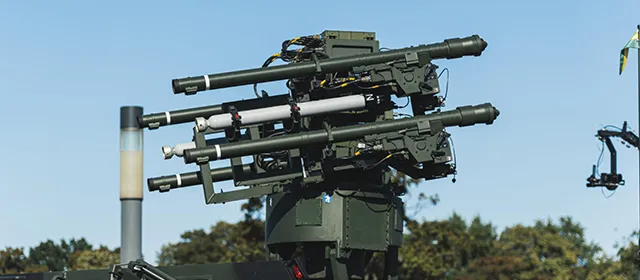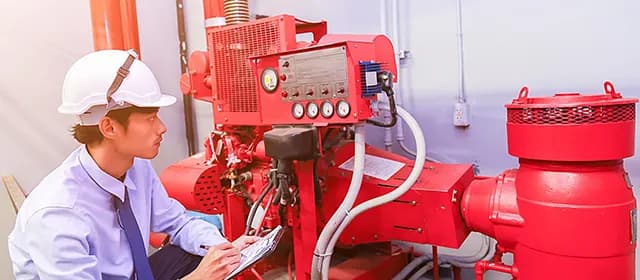The modern security environment is defined by rapid technological advancements and shifting geopolitical tensions. Nations worldwide are reassessing their military strategies to address increasingly sophisticated missile threats. From hypersonic weapons to long-range ballistic missiles, emerging technologies are challenging traditional defense postures.
Missile and missile defense systems are no longer optional; they are essential for national protection, regional stability, and strategic deterrence. Kings Research reported that the missile and missile defense systems market will generate a revenue of $139.25 billion by 2031. Industrialists, defense contractors, and technology developers are now central to shaping this rapidly evolving sector. The convergence of government funding, technological innovation, and commercial participation has transformed missile defense into a high-priority domain for investment and research.
What Are the Key Drivers of Missile Defense Expansion?
Several factors are driving the expansion of missile defense systems worldwide. Firstly, the increase in missile threats from global powers such as China and Russia has necessitated stronger defensive postures. Secondly, technological advancements have enabled more precise detection and interception capabilities. Thirdly, governments are willing to invest substantial budgets to ensure homeland and allied security.
For instance, as of 2023, the United States has deployed seven Terminal High Altitude Area Defense (THAAD) batteries and 15 Patriot missile defense battalions globally, with an eighth THAAD battery currently in production (Source: https://www.congress.gov/). This expansion reflects the growing demand for robust, multi-layered defense solutions capable of intercepting ballistic and cruise missiles at different altitudes.
How Is the U.S. Defense Budget Shaping Missile Capabilities?
Budget allocations are a strong indicator of strategic priorities. The U.S. Department of Defense continues to invest heavily in missile defense technologies. In fiscal year 2025, the department allocated $28.4 billion specifically for enhancing missile-defense capabilities. This funding targets the protection of the homeland, deployed forces, and allied nations against emerging threats from adversaries like China and Russia (Source: https://www.war.gov/).
These funds are being deployed across multiple domains, including interceptor missiles, radar systems, and command and control technologies. For industrial partners, such budget allocations translate into long-term contracts, R&D opportunities, and collaboration with government agencies on advanced defense solutions.
What Role Do Hypersonic Weapons Play in Modern Warfare?
Hypersonic weapons are transforming the strategic calculus in global defense. Capable of traveling at speeds exceeding Mach 5, these weapons can evade traditional detection systems and strike targets with high precision. The Congressional Budget Office estimates that procuring 300 intermediate-range hypersonic boost-glide missiles, similar to those developed by the U.S. Army, would cost approximately $9.6 billion over a 10-year period (Source: https://www.cbo.gov/).
The integration of hypersonic weapons into military arsenals significantly increases the importance of advanced missile defense systems. To counter these high-speed threats, defense programs are investing in upgraded radars, interceptors, and early-warning technologies. For defense contractors and technology firms, this trend presents an opportunity to deliver next-generation solutions capable of keeping pace with rapidly evolving offensive capabilities.
How Is the Pacific Deterrence Initiative Enhancing Regional Security?
Regional security initiatives play a key role in addressing missile threats. The Pacific Deterrence Initiative exemplifies how targeted investments can bolster defense in geopolitically sensitive areas. In fiscal year 2023, the U.S. allocated $393.2 million under this program to strengthen missile defense capabilities in Guam, enhancing the island’s ability to counter ballistic, hypersonic, and cruise missile threats.
This initiative reflects the strategic imperative of maintaining a credible deterrent in the Indo-Pacific. By investing in advanced missile defense systems, the U.S. ensures rapid response capabilities and strengthens alliances in a region of growing geopolitical competition. For defense technology companies, programs like these create both immediate deployment opportunities and long-term collaboration prospects.
Why Is the Global Missile Defense Market Growing?
The global missile defense systems market is experiencing sustained growth, driven by both geopolitical tensions and technological innovation. Valued at $20.5 billion in 2023, the market is projected to reach $30.2 billion by 2030 (Source: https://es.ndu.edu/).
Growth is fueled by several factors. Rising investments in hypersonic and ballistic missile defense, increasing adoption of layered defense architectures, and modernization of legacy systems all contribute to market expansion. For industrial stakeholders, the market represents an evolving ecosystem where engineering innovation, supply chain expertise, and strategic partnerships are key competitive advantages.
How Are Missile Defense Systems Evolving Technologically?
Missile defense is no longer limited to single-layer interceptors. Modern systems integrate multiple layers of detection, tracking, and interception. THAAD batteries, for example, provide high-altitude interception, while Patriot battalions address medium- and short-range threats. The integration of radar, satellite surveillance, and AI-enabled predictive targeting ensures that missile defense is both proactive and reactive.
Industrial partners are contributing to innovations in propulsion, guidance systems, and sensor technologies. Advanced simulations and real-time data analysis now allow defense planners to anticipate threats and deploy assets efficiently. As missile technologies evolve, defense systems must remain adaptable, capable of responding to both conventional and emerging threats, such as hypersonic glide vehicles.
Implications of Hypersonic and Long-Range Threats
Defense agencies are being forced to reconsider conventional tactics due to the quick development of intermediate-range and hypersonic weapons. These weapons shorten the amount of time available for decision-making and put early warning systems to the test. Industrial innovation in predictive analytics, missile detection, and interception speed has therefore become crucial.
Countries can preserve strategic stability and offer a reliable deterrent against enemies by investing in cutting-edge missile defense. Technology companies that specialize in networked communications, high-speed sensors, and real-time threat assessment systems now have more prospects as a result.
How Are Strategic Investments Shaping Regional Deterrence?
The significance of focused expenditures in vulnerable areas is illustrated by budgetary allotments, such as those made under the Pacific Deterrence Initiative. Guam's missile defense is being strengthened as part of a larger plan to preserve project power and operational readiness.
In the same way, modernization is being prioritized in European, Middle Eastern, and Asian defense projects. Governments may strengthen multi-layered missile defense networks, lessen their susceptibility to new threats, and preserve regional stability by fusing technological advancements with financial commitment.
What Opportunities Exist for Industrial Stakeholders?
For defense contractors, missile manufacturers, and technology firms, the growth of missile and missile defense systems presents multiple opportunities. Long-term government contracts, research collaborations, and technology development initiatives provide avenues for revenue generation and innovation.
Companies can focus on areas such as hypersonic detection systems, interceptor missile guidance, radar upgrades, and integration of AI-driven predictive analytics. In addition, cross-border partnerships and joint ventures allow industrial stakeholders to participate in large-scale modernization programs and gain strategic market advantages.
How Will Missile Defense Systems Shape the Future of Global Security?
Missile defense systems are no longer reactive measures; they are strategic tools shaping the global security environment. The deployment of THAAD batteries, Patriots, and hypersonic interceptors reflects a shift toward proactive deterrence. By combining budgetary investment, technological innovation, and strategic planning, nations can enhance defense readiness and maintain geopolitical balance.
The continued growth of the missile defense market signals that this sector will remain central to defense policy and industrial opportunity for years to come. Companies that position themselves as innovators in missile detection, guidance, and interception technology will likely capture long-term value in an increasingly competitive landscape.
Final Thoughts
The world's security environment is being redefined by missiles and missile defense systems. The emphasis is now on strategic readiness and technological dominance, from hypersonic weapons to multi-layered defensive networks.
Technology developers and industrialists are essential to this change. Defense stakeholders may influence the next generation of missile defense solutions by collaborating across sectors, investing in innovation, and aligning with government priorities. This industry will continue to be at the center of international security strategy as long as geopolitical tensions and missile threats continue to exist.




